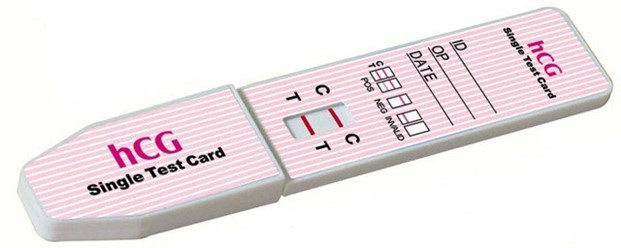The nurse is conducting an annual examination on a young female who reports her last menses was 2 months ago.
Although the client insists she is not pregnant due to a negative home pregnancy test, which assessment should the nurse prioritize to assess for a possible pregnancy?
A positive urine hCG.
Uterine size and shape changes.
A fetal heartbeat.
Chadwick's sign.
The Correct Answer is A
A positive urine hCG test is a priority assessment to assess for a possible pregnancy.
The human chorionic gonadotropin (hCG) hormone is produced by the placenta after implantation and can be detected in the urine of pregnant women.
A urine hCG test is a common method used to confirm pregnancy.

Choice B is not an answer because changes in uterine size and shape occur later in pregnancy and are not a priority assessment for early pregnancy detection.
Choice C is not an answer because a fetal heartbeat can usually be detected at around 6-7 weeks of pregnancy and is not a priority assessment for early pregnancy detection.
Choice D is not an answer because Chadwick’s sign, which refers to the bluish discoloration of the cervix, vagina, and vulva due to increased blood flow, occurs later in pregnancy and is not a priority assessment for early pregnancy detection.
Nursing Test Bank
Naxlex Comprehensive Predictor Exams
Related Questions
Correct Answer is D
Explanation
A postpartum fever is defined as a temperature greater than 100.4 degrees F (38.0 degrees C) on at least two occasions.
These fevers cannot be ignored as they can represent serious infections. The first task is to identify the source.
Choice A is not correct because continuing to monitor for another hour may delay necessary treatment.
Choice B is not correct because administering an antipyretic may only treat the symptom and not address the underlying cause of the fever.
Choice C is not correct because assisting the client in ambulation does not address the underlying cause of the fever.
Correct Answer is C
Explanation
A child with autism spectrum disorder may have problems with social communication and interaction, including ignoring a caregiver who offers them a snack.
Choice A is incorrect because crying and stomping feet after another child takes a toy is normal behavior for a 2- or 3-year-old child.
Choice B is incorrect because repeating an action over and over is not necessarily indicative of autism spectrum disorder.
Choice D is incorrect because flipping a light switch off and on until asked to stop and join other children in playing is not necessarily indicative of autism spectrum disorder.

Whether you are a student looking to ace your exams or a practicing nurse seeking to enhance your expertise , our nursing education contents will empower you with the confidence and competence to make a difference in the lives of patients and become a respected leader in the healthcare field.
Visit Naxlex, invest in your future and unlock endless possibilities with our unparalleled nursing education contents today
Report Wrong Answer on the Current Question
Do you disagree with the answer? If yes, what is your expected answer? Explain.
Kindly be descriptive with the issue you are facing.
